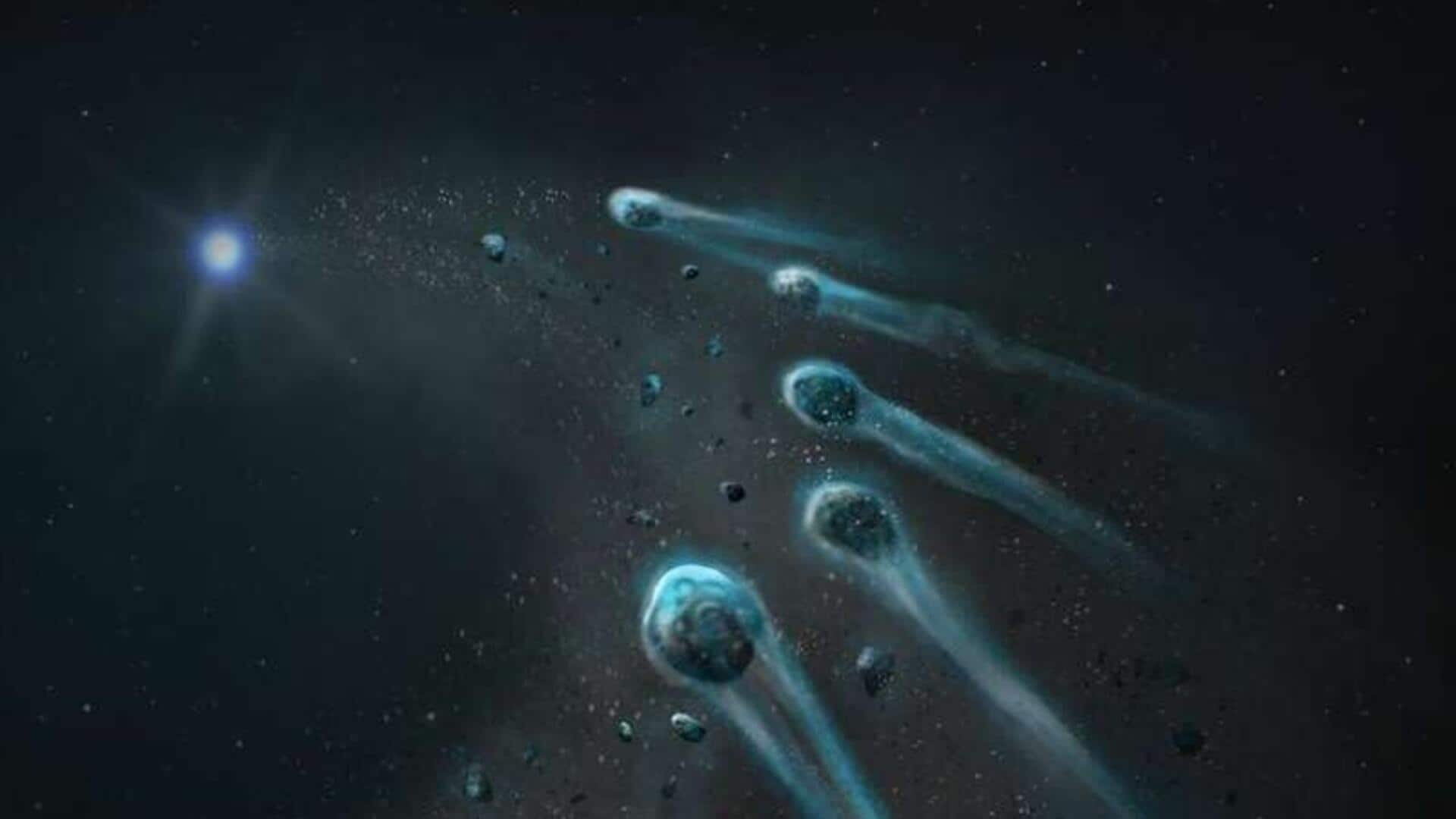**Astronomers Discover a Unique Icy Planetesimal: What’s So Special?**
*By Dwaipayan Roy | Sep 28, 2025 | 03:13 PM*
Astronomers from the University of Warwick have made a remarkable discovery—a frozen, water-rich planetary fragment being consumed by a white dwarf star. This groundbreaking finding was published in the *Monthly Notices of the Royal Astronomical Society*.
### A Unique Discovery
Using ultraviolet spectroscopy from the Hubble Space Telescope, the research team analyzed the chemical composition of distant stars. Among these stars, one stood out: WD 1647+375. Unlike typical white dwarf atmospheres dominated by hydrogen and helium, this star exhibited a “volatile” mix of carbon, nitrogen, sulfur, and oxygen on its surface.
The presence of these volatile elements marked WD 1647+375 as unique compared to other white dwarfs, signaling a different kind of material interaction.
### White Dwarfs as “Cosmic Crime Scenes”
Lead author Snehalata Sahu explained that white dwarfs often display elements such as calcium and iron in their atmospheres—remnants of planetary material they have absorbed. These materials usually come from planets or asteroids that wandered too close to the star.
By examining these chemical signatures, astronomers can uncover the composition of planetesimals beyond our solar system. Sahu described white dwarfs as “cosmic crime scenes,” where traces left behind by consumed objects help identify their origins.
### Chemical Fingerprint Reveals Icy Origin
Ultraviolet spectroscopy showed that WD 1647+375’s atmosphere has an exceptionally high nitrogen content, the highest ever detected in a white dwarf’s debris. Alongside this, there was an abundance of oxygen exceeding what would be expected from a rocky object.
These chemical clues together strongly suggest the material is from an icy planetesimal.
### Possibly a Comet or Dwarf Planet Fragment
The data points to the object being consumed as an icy, water-rich planetesimal—possibly a comet like Halley’s or a fragment of a dwarf planet.
Second author Professor Boris T. Gänsicke noted that the volatile-rich nature of WD 1647+375 resembles Kuiper Belt objects within our solar system. This similarity hints that the debris might be from a Pluto-like body.
### Why This Discovery Matters
This marks the first clear evidence of a hydrogen-atmosphere white dwarf absorbing an icy planetesimal. However, it’s still uncertain whether the object originated in the planetary system surrounding the original star or was an interstellar comet captured from deep space.
The discovery offers exciting new insights into planetary compositions beyond our solar system and opens avenues for further research into the life cycles of planetary remnants.
—
*Stay tuned for updates as astronomers continue to investigate this extraordinary icy planetary fragment.*
https://www.newsbytesapp.com/news/science/astronomers-discover-icy-planetesimal-being-devoured-by-white-dwarf-star/story
